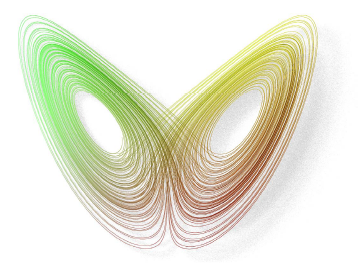
About The Journal
Aims and scope
Annual Review of Chaos Theory, Bifurcations and Dynamical Systems (arctbds.com) is an open access (There is no charges for publishing in this journal) multidisciplinary international peer reviewed journal of chaos theory, bifurcations and dynamical systems publishing high-quality articles quarterly. The primary objective of this review journal is to provide a forum for this multidisciplinary discipline of chaos theory, bifurcations and dynamical systems as well as general nonlinear dynamics. This journal is devoted to the publication of original and review research articles in all areas of chaos theory, bifurcations and dynamical systems.
Subject Coverage
Annual Review of Chaos Theory, Bifurcations and Dynamical Systems covers all aspects of chaos theory, bifurcations and dynamical systems. Topics of interest include, but are not limited to:
∙ Mathematical modeling, computational methods, principles and numerical simulations
∙ Chaos, bifurcation, nonlinear dynamical systems, complexity in nonlinear science and engineering and numerical methods for nonlinear differential equations.
∙ Fractals, pattern formation, solitons, coherent phenomena and nonlinear fluid dynamics.
∙ Control theory and stability and singularity on fundamental or applied studies.
∙ Real applications in all areas of science.
Papers can be oriented towards theory, algorithms, numerical simulations, applications or experimentation.
Journal Sections
Annual Review of Chaos Theory, Bifurcations and Dynamical Systems invites contribution in the following categories:
1. Original research
2. Survey/Review articles
3. Fast Communications: Short, self-contained articles on ongoing research
4. Technical Notes, Open Problems and Book Review
Readership and Audience
Advanced undergraduates and graduate students in natural and human sciences and engineering such as physics, chemistry, biology or bioinformatics…etc; academics and practitioners in nonlinear physics and in various other areas of potential application; researchers, instructors, mathematicians, nonlinear scientists and electronic engineers interested in chaos, nonlinear dynamics and dynamical systems and all interested in nonlinear sciences.
Submission of Papers
Manuscripts should be in English and should be written in a LaTeX file only (See the template). All submissions should be sent electronically in PDF format to: [email protected]. The other formats are not acceptable. Authors are advised to keep a copy of their manuscript since the journal cannot accept responsibility for lost copies. The submitted papers to this journal should not have been previously published nor be currently under consideration for publication elsewhere. All papers are refereed through a double blind process. There is no financial reward for reviewers and editors of this journal. These positions are purely voluntary. When the manuscript is accepted for publication, the authors agree to automatic transfer of the copyright to the journal.
The journal does not charge any fees for submission and processing.
Peer-Review Guidline
The peer review process can be summarized into the following steps:
1. The journal accepts submissions by email.
2. The Editor In Chief checks that the paper is appropriate for the journal and send it to an associate editor.
3. The handling editor sends invitations to two qualified reviewers in the field.
4. The two reviewer sets time aside to read the paper and then gives a recommendation to accept, revise or reject it. Then, the handling editor making an overall decision.
The moste important question for reviewers are:
- Is the work original? relevant for the journal?
- Is the study rationale adequately described?
- Are the results credible?
- Is the paper clearly written?
5. The Editor In Chief sends a decision email to the author including any relevant reviewer comments.
The manuscript should contain the following items: An informative title, author's name, address and e-mail, abstract, 3-5 keywords, text, conclusion, and references. Footnotes should be avoided if possible. References be denoted in the text by numbers in square brackets, e.g. [10]. References should be complete, in the following style:
∙ Papers: Author(s) initials followed by last name for each author, "paper title," publication name, volume, inclusive page numbers, month and year. Authors should consult Mathematical Reviews for standard abbreviations of journal names.
∙ Books: Author(s), title, publisher, location, year, chapter or page numbers (if desired).
Each figure and table or any material (i.e., Fig. 10, Table. 1, ...etc) should be mentioned in the text and numbered consecutively using Arabic numerals. Number each table consecutively using Arabic numerals. Type a brief title below each figure and table or any material. Figures should be submitted separately as encapsulated postscript (.eps) files.
For accepted papers, the author(s) will be asked to transfer copyright of the article to the Publisher. The manuscript will not be published until the Copyright Transfer Form is received.
Page proofs will be sent to the corresponding author. The proofs must be corrected and returned within three days of receipt. Each author will receive an E-offprint copy of his/her paper.
Author rights
∙ the right to make copies of your article for your own personal use.
∙ the right to make and distribute copies of your article to colleagues and at conferences.
∙ the right to post your article on your internet websites, in a thesis or dissertation, in a printed compilation of your works, in extended version into a book-length form, or to re-use portions in other works, with full acknowledgement of its original publication in the journal.
Author's responsibilities
∙ The responsibility to ensure that the manuscript is well written in good English.
∙ Check that the paper is complete, the paper has conformed to the Journal guidelines, all figures/artwork are of publishable quality, layout, spelling errors and minor punctuation errors (errors in grammar or syntax, spelling errors of scientific words/terms, wrong cross-references among formulae and text, mistakes in formulae and equations), all references in accordance to the journal format.